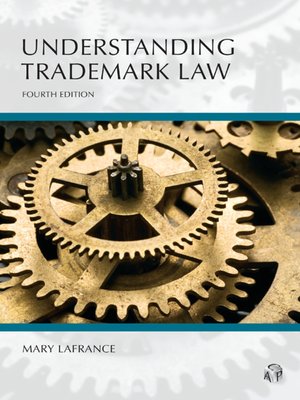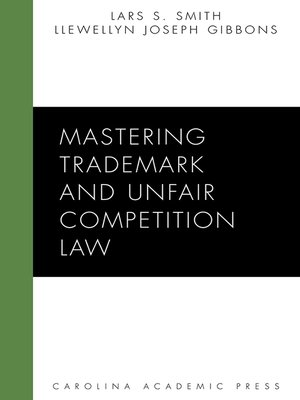Introduction
The USPTO defines a "trademark" as:
A trademark includes any word, name, symbol, or device, or any combination used, or intended to be used, in commerce to identify and distinguish the goods of one manufacturer or seller from goods manufactured or sold by others, and to indicate the source of the goods. In short, a trademark is a brand name.
E.g., think[box]®
Any word, symbol, phrase, or other type of distinguishing mark that is sufficiently distinctive—capable of identifying the source of a particular product—can be trademarked.
There are 4 levels of distinctiveness:
| Distinctiveness | Meaning | Level of Protection |
|---|---|---|
| Arbitrary or fanciful | no logical relationship to the underlying product | Strong |
| Suggestive | evokes or suggests a characteristic of the underlying product | Strong |
| Descriptive | directly describes the underlying product | Possible |
| Generic | describes the general product category | None |
The USPTO may refuse to grant trademark if the mark is:
- Confusingly similar to an existing mark
- Merely descriptive
- Deceptively misdescriptive
- Primarily merely a surname
For more on grounds for refusal of a mark, see the USPTO's Possible Grounds for Refusal of a Mark.
Common law rights do not require registration; however, there are many benefits to registering a trademark:
- Public notice of ownership.
- Legal presumption of ownership and exclusive right to use the mark.
- Use of the federal trademark registration symbol—®.
- Right to sue in federal court.
- Ability to record with U.S. Customs and Border Protection.
- Use of U.S. registration as basis for foreign registration.
For more on the benefits of registration, see the USPTO's Why Register Your Trademark.
Primary Law
Historical Antecedents
The use of marks to identify one's goods or products has existed since antiquity—artifacts excavated in Egypt and Greece are evidence of such—however, these may be more accurately described as "maker's marks" or "hallmarks." The earliest English law on trademarks was the Baker's Marking law. Proclaimed by King Henry III in 1266 ADE, the law required bakers to place a mark on the leaves of bread that they sold, identifying the baker. Frank I. Schechter, The Historical Foundations of the Law Relating to Trade-Marks 48 (1925).
The Constitution
Unlike patent law and copyright law, which originated from Article I, section 8, clause 8 of the Constitution, there is no provision in the Constitution authorizing Congress to specifically create a registry system for trademarks. Congress did not attempt to establish a federal trademark protection mechanism until 1870. Act of July 8, 1870, ch. 230, 16 Stat. 198.
Congress amended the Act in 1876 to add criminal penalties of infringing or counterfeiting registered marks. Act of August 14, 1876, ch. 274, 19 Stat. 141. The statute was quickly declared unconstitutional by The Trade-Mark Cases, 100 U.S. 82 (1879); however, these did not object to the states' common law trademark systems. Congress was finally created a legitimate trademark registration system in 1881, basing its authority upon Congress' Commerce Clause powers (Art. 1,§ 8, Cl. 3).
Statutes
The Lanham Act, signed into law on July 5, 1946, was the first major step toward substantive federal trademark legislation in the United States.
The latest complete revision of U.S. trademark law is: The Trademark Act of 1946 (Lanham Act), 60 Stat. 427, 15 U.S.C. §§1051-1127 (2000), July 5, 1946, ch. 540, Pub. L. No. 79-489.
The following are the major revisions of federal trademark law:
- Trademark Act of 1870,16 Stat. 210.
- Trademark Act of 1876, 19 Stat. 141.
- Trademark Act of 1881, 21 Stat. 502.
- Trademark Act of 1905, 33 Stat. 724.
- Trademark Act of 1920, 41 Stat. 522.
- The Lanham Act (1946), 60 Stat. 427.
- The Trademark Law Revision Act of 1988, 102 Stat. 3935.
- Trademark Modernization Act of 2020, 134 Stat 1182.
Fair Use
Current trademark law does not limit protection to a set time period—marks only expire when owners stop using them in commerce. However, there are two types of permitted or fair use: descriptive fair use and nominative fair use.
- Descriptive fair use permits use of another's trademark to describe the user's products or services, rather than as a trademark to indicate the source of the goods or services.
- Nominative fair use permits use of another's trademark to refer to the trademark owner's goods and services associated with the mark so long as:
- the product or service in question is not readily identifiable without use of the trademark;
- only so much of the mark as is reasonably necessary to identify the product or service is used; and
- use of the mark does not suggest sponsorship or endorsement by the trademark owner.
International Trademark Association, Fair Use of Trademarks.
Legislative History
The Federal Trademark Laws are codified at Title 15, Chapter 22 of the United States Code.
For more on compilations and legislative history, see our Federal Legislative Research Guide.
- Trademark Registration Act of 1946 (Lanham Act) (Public Law No. 79-489), 60 Stat. 427 (July 5, 1946).
- The Legislative History of the 1950 Amendment to the Trademark Act of 1946 (Public Law No. 81-710), 64 Stat. 459 (Aug. 17, 1950).
- The Legislative History of Amendments to the Trademark Act of 1946 (Lanham Act), (Public Law No. 97-772), 76 Stat. 769 (Oct. 9, 1962).
- The Trademark Law Revision Act of 1988, (Public Law No.100-667), 102 Stat. 3935 (Nov. 16, 1988).
- Uruguay Round Agreements Act, (Public Law No. 103-465), 108 Stat. 4989 (Dec. 8, 1994).
- The Federal Trademark Dilution Act of 1995 (Public Law No. 104-98), 109 Stat. 985 (Jan. 16, 1996).
- The Legislative History of the Trademark Remedy Clarification Act (Public Law No. 102-542) 106 Stat. 3567 (Oct. 27, 1992).
Regulations
The USPTO is authorized by Congress (37 U.S.C. §2), and under the direction of the Secretary of Congress to promulgate "regulations not inconsistent with the law" governing the conduct of the Office. The USPTO regulations appear in Title 37 of the Code of Federal Regulations. Within Title 37 there appear separate indexes for the Patent regulations and the Trademark regulations.
There is also a general CFR Index. The trademark regulations are also searchable online in: Lexis, Westlaw, Bloomberg Law, HeinOnline, and ProQuest Regulatory Insight, among other research databases.
Selected Case Law
The following list contains select notable Supreme Court cases that deal with trademark law. The first trademark law case brought before a United States federal court was Taylor v. Carpenter, 25 F. Cas. 742 (C. C. D. Mass. 1844).
- Kellogg Co. v. National Biscuit Co., 305 U.S. 111 (1938).
- Inwood Laboratories, Inc. v. Ives Laboratories, Inc., 456 U.S. 844 (1982).
- San Francisco Arts & Athletics, Inc. v. United States Olympic Committee, 483 U.S. 522 (1987).
- Two Pesos, Inc. v. Taco Cabana, Inc., 505 U.S. 763 (1992).
- Qualitex Co. v. Jacobson Products Co., Inc., 514 U.S. 159 (1995).
- TrafFix Devices, Inc. v. Marketing Displays, Inc., 532 U.S. 23 (2001).
- United States v. Alvarez, 567 U.S. 709 (2012).
- Lexmark Int'l v. Static Control Components, 572 U.S. 118 (March 25, 2014).
- Matal v. Tam, 137 S. Ct. 1744, 198 L. Ed. 2d 366 (2017).
- Iancu v. Brunetti, 139 S. Ct. 2294, 204 L. Ed. 2d 714 (2019).
- Romag Fasteners, Inc. v. Fossil, Inc. (2020).
- Patent and Trademark Office v. Booking.com B. V., 140 S. Ct. 2298, 207 L. Ed. 2d 738 (2020).
Secondary Sources
-
-
-
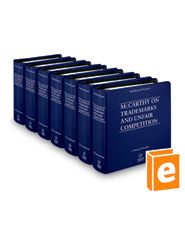 McCarthy on Trademarks and Unfair Competition
by
Publication Date: 2021
McCarthy on Trademarks and Unfair Competition
by
Publication Date: 2021 -
Overlapping Intellectual Property Rights by
Call Number: K1401.O93 2012ISBN: 9780199696444Publication Date: 2012-10-25 -
-
Trademark and Unfair Competition in a Nutshell by
Call Number: KF3180 .J26 2013ISBN: 9781647088583Publication Date: 2021-09-08 -
-
-
 lessons and tutorials:
lessons and tutorials:
-
Trademark Law Subject IndexA list of all CALI lessons covering trademark law.
-
Secondary Sources: Intellectual PropertyUnder Topic use the Narrow Topic search bar to narrow to only trademark sources.
-
Legal Resource Index (LRI)A controlled-vocabulary index of legal literature with a focus that includes legal newspapers, bar journals, and other practice-oriented material. LRI coverage generally begins in 1980, with a later starting date for certain individual publications. Click the icon of the database you prefer to link to the Index.
-
Index to Legal Periodicals and Books (ILP)This is the premier index of legal periodicals, books, and sympoisa, with a primary focus on English language resources. Many articles are available in full-text. Some articles may be available via HeinOnline.
-
EBSCO Legal CollectionCollection of about 250 law journals, including a mix of law-school based journals, peer-reviewed journals, bar journals, and other genres of legal literature.
-
EBSCO Academic Search CompleteA multi-disciplinary full-text database that indexes and abstracts over 10,000 publications, some law-related. Includes the full-text of over 5,400 periodicals, including more than 4,400 peer-reviewed journals.
-
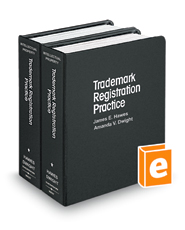 Trademark Registration Practice
by
Publication Date: 2021
Trademark Registration Practice
by
Publication Date: 2021 -
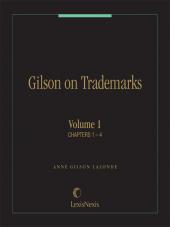 Gilson on Trademarks
by
Publication Date: 2021
Gilson on Trademarks
by
Publication Date: 2021 -
 Trademarks and Unfair Competition Deskbook
by
Publication Date: 2021
Trademarks and Unfair Competition Deskbook
by
Publication Date: 2021 -
A Legal Strategist's Guide to Trademark Trial and Appeal Board Practice by
Call Number: KF3193 .L44ISBN: 9781634253826Publication Date: 2018-02-07



